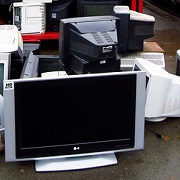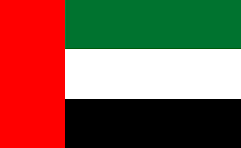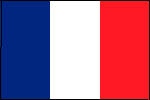We use cookies to personalize content and advertisements, to offer social media functions and to analyze access to our website.
You can revoke the given consent at any time. You can find further information in our Privacy Policy.
Apr 2016
On 20, Apr 2016 | In News @en | By Alisa Maier
Mar 2016
 Compared to the German ElectroG of 2005, the revised ElectroG foresees important changes. One difference refers to the fact that according to §§ 11 and 24 governments are empowered to establish more detailed legal requirements via ordinances.
Based on § 24 ElectroG and asked by the Federal Environmental Ministry, the Federal Environmental Agency (UBA) kicked off the preparatory work for a so-called treatment ordinance. For doing so, UBA organized a working committee and four working groups. Stakeholders such as the Federal Environmental and the Federal Ministry for economic affairs, representatives of the German Bundesländer, the associations of the municipalities, industry associations and representatives of the academia were invited to join them.
It is the political objective of the new treatment ordinance to establish requirements for the treatment of WEEE aiming at improving the recuperation of critical secondary raw material such as rare earth metals and the withdrawal of harmful substances. The first draft of the treatment ordinance shall be available within the next 12 to 18 months.
We will keep you updated about this new legislation Project.
Compared to the German ElectroG of 2005, the revised ElectroG foresees important changes. One difference refers to the fact that according to §§ 11 and 24 governments are empowered to establish more detailed legal requirements via ordinances.
Based on § 24 ElectroG and asked by the Federal Environmental Ministry, the Federal Environmental Agency (UBA) kicked off the preparatory work for a so-called treatment ordinance. For doing so, UBA organized a working committee and four working groups. Stakeholders such as the Federal Environmental and the Federal Ministry for economic affairs, representatives of the German Bundesländer, the associations of the municipalities, industry associations and representatives of the academia were invited to join them.
It is the political objective of the new treatment ordinance to establish requirements for the treatment of WEEE aiming at improving the recuperation of critical secondary raw material such as rare earth metals and the withdrawal of harmful substances. The first draft of the treatment ordinance shall be available within the next 12 to 18 months.
We will keep you updated about this new legislation Project.
Mar 2016
On 01, Mar 2016 | In News @en | By Alisa Maier
 The United Arab Emirates (UAE) has been working on a new legislation for the restriction of the use of hazardous substances in electrical and electronic equipment. Three different draft versions have been discussed since last summer. Now, a finalized draft version has been submitted to the Federal National Council and is expected to be approved soon. According to the draft regulation, the final law shall enter into force one year after its publication in the UAE Official Gazette.
Basically, the UAE RoHS draft regulation is based on EU RoHS Directive 2011/65/EU. As in the EU, the following substances are intended to be restricted, with identical thresholds: Lead, Mercury, Cadmium, Hexavalent chromium, Polybrominated biphenyls (PBB), Polybrominated diphenyl ethers (PBDE) as well as the four phtahaltes which were added in March 2015: Bis(2-ethylhexyl) phthalate (DEHP), Butyl benzyl phthalate (BBP), Dibutyl phthalate (DBP), Diisobutyl phthalate (DIBP).
Despite the similarities, there are differences with respect to transition periods and compliance requirements, as e.g. registration and certification duties. It is prohibited to display or sell any products in the UAE unless they are registered under ECAS or have a certificate or mark accepted by ESMA.
For more information please contact us at info@1cc-consulting.com.
The United Arab Emirates (UAE) has been working on a new legislation for the restriction of the use of hazardous substances in electrical and electronic equipment. Three different draft versions have been discussed since last summer. Now, a finalized draft version has been submitted to the Federal National Council and is expected to be approved soon. According to the draft regulation, the final law shall enter into force one year after its publication in the UAE Official Gazette.
Basically, the UAE RoHS draft regulation is based on EU RoHS Directive 2011/65/EU. As in the EU, the following substances are intended to be restricted, with identical thresholds: Lead, Mercury, Cadmium, Hexavalent chromium, Polybrominated biphenyls (PBB), Polybrominated diphenyl ethers (PBDE) as well as the four phtahaltes which were added in March 2015: Bis(2-ethylhexyl) phthalate (DEHP), Butyl benzyl phthalate (BBP), Dibutyl phthalate (DBP), Diisobutyl phthalate (DIBP).
Despite the similarities, there are differences with respect to transition periods and compliance requirements, as e.g. registration and certification duties. It is prohibited to display or sell any products in the UAE unless they are registered under ECAS or have a certificate or mark accepted by ESMA.
For more information please contact us at info@1cc-consulting.com.
Mar 2016
On 01, Mar 2016 | In News @en | By Alisa Maier
Feb 2016
On 16, Feb 2016 | In News @en | By Alisa Maier
 There have been long-lasting discussions to collect copyright levies on cloud storage. Now there is a draft amendment to the Copyright Act substantiating exactly this matter in France. For the first time not only physical products like smartphones, hard disks or blank CDs would be imposed with a levy, but also online services.
To date, the scope of the products as well as the amount of the levy is determined by storage capacity and the actual usage. In practice, the usage appears to be shifting towards storing files remotely and not on the local hard drive, not to mention the copying on blank CDs. The more cloud services are used and the more files are stored online, the more questions about the suitability of the existing levy system arise. In France the future of private copying, i. e. the adaptation of this system is in discussion since years. Already in 2013, Pierre Lescure wrote a comprehensive report, commissioned by the French Ministry of Culture, and recommended to extend the levy system in the direction of online services («Contribution aux politiques culturelles à l’ère numérique»).
According to the Lescure-Report the existing scope should be extended to devices providing access to the internet in a first step. The storage capacity is not foregrounded anymore. Game consoles, for instance, have been taken into consideration and are now dutiable in many countries. Pursuant to this, the extension to online services seems to be the logical consequence. This arises in the current draft legislation which has been presented to the French senate.
There have been long-lasting discussions to collect copyright levies on cloud storage. Now there is a draft amendment to the Copyright Act substantiating exactly this matter in France. For the first time not only physical products like smartphones, hard disks or blank CDs would be imposed with a levy, but also online services.
To date, the scope of the products as well as the amount of the levy is determined by storage capacity and the actual usage. In practice, the usage appears to be shifting towards storing files remotely and not on the local hard drive, not to mention the copying on blank CDs. The more cloud services are used and the more files are stored online, the more questions about the suitability of the existing levy system arise. In France the future of private copying, i. e. the adaptation of this system is in discussion since years. Already in 2013, Pierre Lescure wrote a comprehensive report, commissioned by the French Ministry of Culture, and recommended to extend the levy system in the direction of online services («Contribution aux politiques culturelles à l’ère numérique»).
According to the Lescure-Report the existing scope should be extended to devices providing access to the internet in a first step. The storage capacity is not foregrounded anymore. Game consoles, for instance, have been taken into consideration and are now dutiable in many countries. Pursuant to this, the extension to online services seems to be the logical consequence. This arises in the current draft legislation which has been presented to the French senate.
Jan 2016
On 28, Jan 2016 | In Copyright Levies, News @en | By Alisa Maier
 A new register for companies who have to pay copyright levies for mobile phones, computer and storage media will be established in Germany. Yet it is going to be even more powerful as only compliant companies are listed in a so-called “white list”. Vice versa, not mentioned companies are pilloried for not paying copyright levies (appropriately). The responsible collecting society ZPÜ will publish (here) all names and addresses of companies fulfilling their obligations.
For a long time collecting societies were accused for not covering the bulk of the market for recordable electronic products and storage media. Hence, many companies are not reporting sales figures and are not paying established tariffs. Apparently this is true.
However, according to the tariff agreement for mobile phones and tablets from December 2015, collecting societies can now assert their claims (by contract) comprehensively. The “white list” is accompanied by well-directed research, e. g. in the manufacturer register for take-back obligations of WEEE. Other EU Member States like France and Poland approach in a similar vein. In Switzerland there is even a so-called “black list” in the environmental sector.
We are happy to explain all regulation resulting from the new general agreements for copyright levies in Germany. Feel free to contact us: info@1cc-consulting.com
A new register for companies who have to pay copyright levies for mobile phones, computer and storage media will be established in Germany. Yet it is going to be even more powerful as only compliant companies are listed in a so-called “white list”. Vice versa, not mentioned companies are pilloried for not paying copyright levies (appropriately). The responsible collecting society ZPÜ will publish (here) all names and addresses of companies fulfilling their obligations.
For a long time collecting societies were accused for not covering the bulk of the market for recordable electronic products and storage media. Hence, many companies are not reporting sales figures and are not paying established tariffs. Apparently this is true.
However, according to the tariff agreement for mobile phones and tablets from December 2015, collecting societies can now assert their claims (by contract) comprehensively. The “white list” is accompanied by well-directed research, e. g. in the manufacturer register for take-back obligations of WEEE. Other EU Member States like France and Poland approach in a similar vein. In Switzerland there is even a so-called “black list” in the environmental sector.
We are happy to explain all regulation resulting from the new general agreements for copyright levies in Germany. Feel free to contact us: info@1cc-consulting.com
Dec 2015
On 22, Dec 2015 | In News @en | By Alisa Maier
 The European Commission has recently published the long awaited second version of its Circular Economy Package. The first package had been published by the former Barroso Commission and had been withdrawn by the Juncker Commission shortly after taking office. However the Juncker Commission had promised to provide a new, more ambitious package by the end of 2015.
With the new Circular Economy Package, the Commission aims to increase the recycling and preparation for re-use of municipal waste in general as well as packaging waste, harmonise the calculation of collection and recycling targets throughout the Member States and reduce the landfilling of municipal waste.
For the first time, the Commission also aims to define minimum common requirements for extend producer responsibility schemes. Besides that, the package includes measures in the Ecodesign working plan for 2015-2017 to promote reparability, durability and recyclability of products, in addition to the already planned energy efficiency measures. Electrical and electronic products will be a major target for these actions.
A strategy on plastics and a report on critical raw materials shall follow in 2017.
Overall, the Commission targets to carry out all necessary actions for a regulatory framework for the development of a circular economy before 2020.
The full text of the Action Plan and the legislative proposals can be found on the Commission website: http://ec.europa.eu/environment/circular-economy/index_en.htm
The European Commission has recently published the long awaited second version of its Circular Economy Package. The first package had been published by the former Barroso Commission and had been withdrawn by the Juncker Commission shortly after taking office. However the Juncker Commission had promised to provide a new, more ambitious package by the end of 2015.
With the new Circular Economy Package, the Commission aims to increase the recycling and preparation for re-use of municipal waste in general as well as packaging waste, harmonise the calculation of collection and recycling targets throughout the Member States and reduce the landfilling of municipal waste.
For the first time, the Commission also aims to define minimum common requirements for extend producer responsibility schemes. Besides that, the package includes measures in the Ecodesign working plan for 2015-2017 to promote reparability, durability and recyclability of products, in addition to the already planned energy efficiency measures. Electrical and electronic products will be a major target for these actions.
A strategy on plastics and a report on critical raw materials shall follow in 2017.
Overall, the Commission targets to carry out all necessary actions for a regulatory framework for the development of a circular economy before 2020.
The full text of the Action Plan and the legislative proposals can be found on the Commission website: http://ec.europa.eu/environment/circular-economy/index_en.htm
Dec 2015
 On 17 of December the European Chemicals Agency (ECHA) has added 5 new Substances of Very High Concern (SVHC) to the REACH Candidate List. The Candidate List now contains 168 substances.
The 5 new entries refer to:
Nitrobenzene (EC No. 202-716-0), which has been added to the list due to its reproductive toxicity properties. The substance is used in the manufacturing process of other substances, e.g. as an intermediate for further chemical processing.
2,4-di-tert-butyl-6-(5-chlorobenzotriazol-2-yl)phenol (UV-327) (EC No. 223-383-8) and 2-(2H-benzotriazol-2-yl)-4-(tert-butyl)-6-(sec-butyl)phenol (UV-350) (EC No. 253-037-1), which were added to the list because of their very persistent and very bioaccumulative properties. Both substances are used as UV-protection agents in coatings, plastics, rubber and cosmetics.
1,3-propanesultone (EC No. 214-317-9), which has been added to the list due to its carcinogenic properties. This SVHC substance is used as an electrolyte fluid of lithium ion batteries.
Perfluorononan-1-oic-acid and its sodium and ammonium salts (EC No. 206-801-3), which has been added to the list due to its persistent, bioaccumulative, toxic and reproductive toxicity properties. The substance is used as a: processing aid for fluoropolymer manufacture, lubricating oil additive, surfactant for fire extinguishers, cleaning agent, textile antifouling finishing agent, polishing surfactant, waterproofing agents and in liquid crystal display panels.
More information on http://echa.europa.eu/view-article/-/journal_content/title/five-new-substances-of-very-high-concern-added-to-the-candidate-list
On 17 of December the European Chemicals Agency (ECHA) has added 5 new Substances of Very High Concern (SVHC) to the REACH Candidate List. The Candidate List now contains 168 substances.
The 5 new entries refer to:
Nitrobenzene (EC No. 202-716-0), which has been added to the list due to its reproductive toxicity properties. The substance is used in the manufacturing process of other substances, e.g. as an intermediate for further chemical processing.
2,4-di-tert-butyl-6-(5-chlorobenzotriazol-2-yl)phenol (UV-327) (EC No. 223-383-8) and 2-(2H-benzotriazol-2-yl)-4-(tert-butyl)-6-(sec-butyl)phenol (UV-350) (EC No. 253-037-1), which were added to the list because of their very persistent and very bioaccumulative properties. Both substances are used as UV-protection agents in coatings, plastics, rubber and cosmetics.
1,3-propanesultone (EC No. 214-317-9), which has been added to the list due to its carcinogenic properties. This SVHC substance is used as an electrolyte fluid of lithium ion batteries.
Perfluorononan-1-oic-acid and its sodium and ammonium salts (EC No. 206-801-3), which has been added to the list due to its persistent, bioaccumulative, toxic and reproductive toxicity properties. The substance is used as a: processing aid for fluoropolymer manufacture, lubricating oil additive, surfactant for fire extinguishers, cleaning agent, textile antifouling finishing agent, polishing surfactant, waterproofing agents and in liquid crystal display panels.
More information on http://echa.europa.eu/view-article/-/journal_content/title/five-new-substances-of-very-high-concern-added-to-the-candidate-list
Nov 2015
Nov 2015
 The new ElektroG transposing the EU WEEE Directive (2012/19/EU) into German law has entered into force on October 24, 2015.
Producers, retailers and distance sellers have to fulfil a number of new and modified obligations from the new ElektroG, e.g.
The new ElektroG transposing the EU WEEE Directive (2012/19/EU) into German law has entered into force on October 24, 2015.
Producers, retailers and distance sellers have to fulfil a number of new and modified obligations from the new ElektroG, e.g.